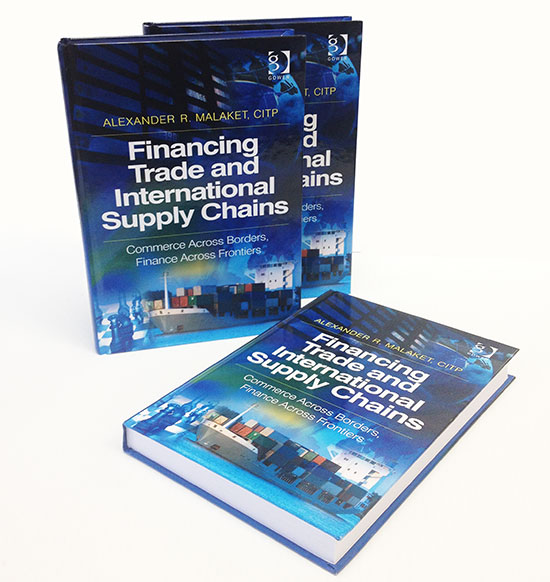
The exciting part of international business and trade, some will suggest, is in the development and entry into new markets, in the enrichment that comes from experiencing different cultures and navigating the challenges of doing business in new environments. Certainly not in the area of finance!
The reality is however, that you can get everything absolutely right, but if you miss the target or lose the plot in terms of the financial aspects of the deal, it could have disastrous effects on your business overall. Have I got your attention?
The pursuit of international business and trade should be enriching and enjoyable, but it must be commercially viable—let me just say it—PROFITABLE!
I happen to think (perhaps you’ll feel a tear of sadness well up as you read this) that finance can be VERY interesting, and almost anything with an international flavour or angle is intrinsically fascinating, including finance that crosses borders. So much so that I make a decent living at it, and just for fun—because everybody needs a hobby—I wrote a short book on the topic. I can hear some of you saying “GET A LIFE!”
What IS trade finance?
Trade finance—the esoteric, poorly understood branch of finance that deals with the financing of international trade—is in fact relatively straightforward at its core. It has proven effective in facilitating trade across every market on the globe for hundreds of years if not longer. Did you feel that? The sudden rush of adrenaline and flash of goose-bumps as you contemplated the mind-blowing implications of this statement? Work with me on this!
Industry estimates suggest that 80 to 90 percent of global merchandise-trade-flows (now in the range of $18 trillion annually) are enabled through some form of trade finance. Put another way, only 10 to 20 percent of trade could take place today without some form of trade finance, including the risk mitigation aspect of trade finance. Still think trade finance is a snoozer topic? Really? Then STOP READING NOW!
For the rest of us, I wrote my book, “Financing Trade and International Supply Chains” as a means of introducing this vital business—a critical element of any company’s international business toolkit—in a way that (hopefully) distills some key concepts, and presents the topic in a very practical, commercially useful manner.
The four fundamentals of trade finance
Trade finance, including the financing of global supply chains, is fundamentally about four things:
- The facilitation of secure and timely payment across borders: “SHOW ME THE MONEY”
- The effective mitigation of a wide variety of risk in markets across the globe: “PLEASE DON’T LET ME LOSE MY SHIRT ON THIS DEAL”
- The provision of liquidity and financing: “BANKER, CAN YOU SPARE A DIME?”
- The facilitation of information flow about a shipment and/or about the related movement of money: “I COULD TELL YOU, BUT THEN…”
No matter how complex a deal or trading relationship, or how challenging the markets may be from a political risk perspective, a trade financing solution will involve some or all of the above. It can also simultaneously benefit an importer, an exporter and potentially a collection of commercial relationships that are part of a common global supply chain. Trade finance has proven effective and valuable in transactions involving stable and secure economies with established and trusted trading relationships. It’s also effective (even essential) in markets that may be war-torn or challenged by lack of basic infrastructure.
Trade finance can play an important role in enabling trade linked directly to international development and poverty reduction in the most difficult markets on the planet.
It can also play a critical role in enabling access—through trade—to agri-food, commodities and other goods or services that shape the standard of living of entire nations and regions. Perhaps at a more granular level, trade finance can help small businesses, even start-ups, explore opportunities to source in or sell to international markets much earlier in their life cycle than might otherwise be feasible.

Setting up a trade finance solution
While banks provide the majority of certain types of trade finance, other providers, such as Canada’s Northstar Trade Finance, provide critical support to SMEs. Other institutions like Export Development Canada (EDC) play a critical role in this domain as well, both on the side of financing and risk mitigation. Specialists in this field are very well-equipped to provide indispensable advice on trade and supply chain finance options.
As an exporter, the ability to package an attractive financing solution with your product or service can be an important competitive-advantage, especially in this post-crisis environment where liquidity remains constrained (i.e., there’s no cash around). A large importer, likewise, can use supply chain finance structures to allow small suppliers (especially “strategic suppliers”) to gain access to financing on attractive terms. Everybody wins!
If you’ve read this far, you’re hopefully convinced of the relatively straightforward nature of trade finance at its core, and of the versatility of this discipline in enabling trade flows involving businesses of all sizes. In the fine tradition of presentations and blog entries, this should ‘leave you wanting to know more’ about the financing of international trade, and if so, I happen to know of a pretty good book on the topic…







disqus comments